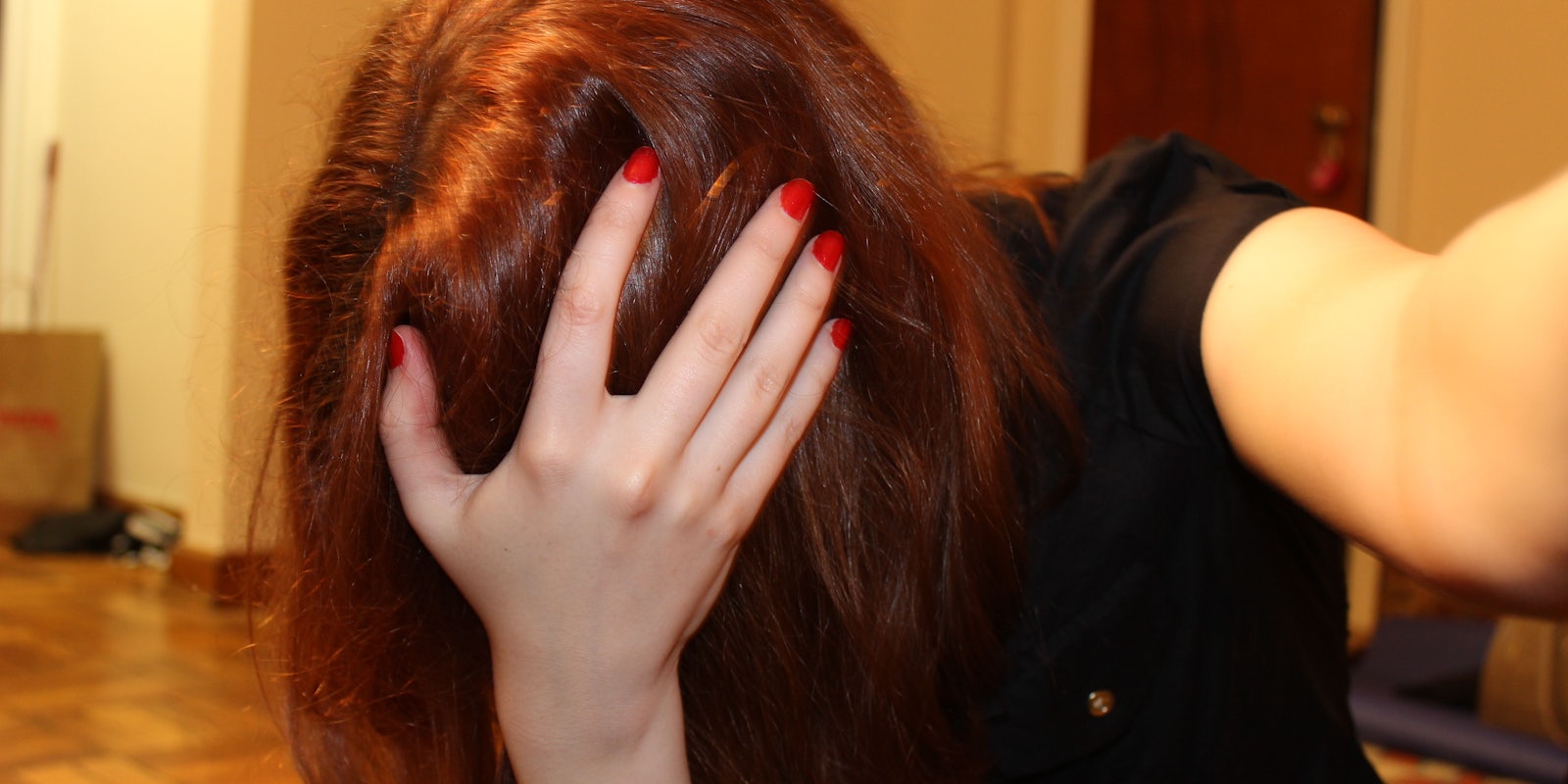Over the past couple of months, there has been a lot of news on sexual assault—from Jian Ghomeshi to Bill Cosby to Uber drivers to rape on college campuses. And there have been tons of reaction pieces to these events. Besides feeling a real exhaustion and sadness over the way our culture treats rape survivors, I’ve noticed something about all of the stock photos accompanying these articles.
They’re all photos of women, often with their faces hidden from view—heads in their hands or on their knees. They’re in the fetal position. They look like they’re in the process of crying, or about to cry.
I suppose they could easily double as photos for stories on depression, mental illness, a death in the family, or any number of terrible things that could happen to a person in their lifetime. It makes sense that we would gravitate toward using these photos. Sexual assault is a very painful experience, and the denial of your experience is often a greater trauma than the initial event.
At the same time, these photos don’t capture the complexity of the issue at all. And when talking about rape, it always seems as if we focus on showing the victim and not the rapist. The victims are also usually white women, women who present as traditionally feminine, and women who are college age.
It is a very unique kind of trauma, but when we use photos like this, it reminds me that we have a very specific idea of what a good victim looks like: Constantly on the verge of tears, white, middle class and conventionally pretty.
The good victim remembers every detail, immediately goes to the police, goes to the hospital, doesn’t know her rapist and isn’t promiscuous, if she is sexually active at all. Rape survivors are also supposed to be in a constant state of depression and anxiety, not just inwardly but outwardly. Their pain must always be on display.
In a recent episode of The Good Wife, a police officer in a college rape investigation observed that the victim appeared rather composed for someone who had just been raped, as if it were evidence that she was lying. And that’s really not an uncommon conclusion for police to draw.
But the reality is that rape survivors don’t stop living their lives. They still have to pay bills, eat a meal, attend their statistics classes and attend to myriad other typical everyday responsibilities. They also have a right to go to social events and enjoy the company of friends after their trauma. They have a right to go on dates again, and attend family functions.
In other words, we can’t expect rape victims to constantly show outward signs of trauma—to retreat from their lives in order to make us feel comfortable and convince us that their pain is real. But when we show these photos, it’s clear that we have an expectation of what a rape survivor should do to “prove” her or himself as a victim deserving of justice.
The hidden face that is so common in photos chosen to accompany stories about rape is also telling. The victim is portrayed as ashamed, and although it’s not uncommon for victims to feel shame, this is a damaging product of our culture.
We tell survivors they are the ones who need to be careful when revealing their stories—not that people should be careful not to rape. The idea that sexual assault victims should be ashamed or feel dirty doesn’t need to be continually perpetuated through our media. Somehow, through these photos, “victims” stop being people with complicated identities and become our society’s perfect ideal of a damsel in distress.
These photos, however unintentionally, have the potential to dehumanize and separate rape survivors. They contribute to the idea that survivors all react the same way to trauma, despite the fact that we know how common it is for victims to go about their lives as they did before, often not reporting, or living with or near their rapists. We know disassociation or fragmented memories happen.
We know people make decisions to move on with their lives because going to the police and outing themselves in a community that punishes them is too painful. We know many people simply create another narrative and compartmentalize in order to move on. We need to stop hiding from the reality of so many survivors because it makes us feel better, and is a neater story to present.
Here are photos that would also be accurate but never shown, because they don’t fit our concept of how rape victims behave:
• Photos of calm women talking to disinterested police officers
• Photos of women going about their daily lives, carrying books to class or sitting at their laptops
• Photos of men talking to counselors
• Photos of two people talking, smiling
• Photos of two people avoiding each other
As an editor, I know these photos would be difficult to present with a story. They don’t “match” the story as we think we know it. It is eerie to see a story on rape and look at a picture of a woman folding laundry or smiling with friends, or someone who could potentially be her rapist.
But that is the reality. And if we wanted to portray sexual assault as it exists and not under the limited conditions we allow ourselves to imagine it is possible, we would risk making people feel uncomfortable.
Photo via Casey Quinlan


